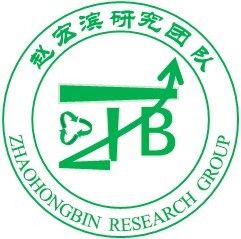Release time:
The team of Professor Hongbin Zhao from the Department of Chemistry and the Institute of Sustainable Energy of Shanghai University has made important progress in the research of highly active non-noble metal as oxygen reduction electrocatalysts. Heteroatom doping plays an essential role in improving the catalytic performance of electrocatalysts for oxygen reduction reaction (ORR). However, how to regulate heteroatom doping remains a significant challenge. This paper develops an efficient strategy by using a novel versatile chelating ligand to enhance P loading and expose more metal single Fe atom active sites of FeN4P-C catalyst. The electron distribution of active center is considerably changed by P doping, which significantly influences the catalytic ORR performance.
The dopant P in the FeN4P-C catalyst induces a small number of d-electrons from t2g-orbitals around the Fermi level, making the interaction between Fe active site and O2 slightly more robust than in the FeN4–C catalyst, as studied by DFT calculations. The paper entitled "Enhancement mechanism of P dopant on atomically distributed FeN4P-C electrocatalyst over a wide pH range "Electrochimica Acta”, link: https://doi.org/10.1016/j.electacta.2022.141452
Recently, the team of Professor Hongbin Zhao from Shanghai University used dual active sites to design an ORR catalyst with high-efficiency catalytic activity where atomically dispersed Fe-Nx and coexisted with heteroatom to overcome the oxygen reduction reaction intermediate OH* on a Fe site. At the same time, the use different characterization techniques such as, the scanning transmission electron microscopy (HAADF-STEM), X-ray photoelectron spectroscopy (XPS) Brunauer–Emmett–Teller (BET) and Density functional theory (DFT) can explain the active sites effectively.
The researcher used cheap biowaste Willow catkin without the addition of any template to form FeN4P-C catalyst. The as-prepared FeN4P-C catalyst exhibits excellent catalytic ORR activity in both acidic (with a half-wave potential of 0.760 V vs. RHE) and basic (with a half-wave potential of 0.885 V vs. RHE) conditions, which are superior to those of the commercial Pt/C (20 wt%) catalyst. Furthermore, this catalyst also demonstrates outstanding stability and good hydrogen peroxide and methanol tolerance. A Zinc-air battery (ZAB) assembled using the cathode catalyst has validated the high performance of this catalyst. This study provides an efficient method for generating well-defined single-atom active sites to improve catalytic performance and paves the way to identify coordinated single metal atom sites for electrocatalysis applications.

Figure. 1. (a) Synthetic diagram of FeN4P-C catalyst. For the as-prepared FeN4P-C catalyst: (b) SEM pictures; (c) TEM image; (d) HAADF-STEM image; and (e) C, N, Fe, and P elemental distribution mapping in STEM.

Figure. 2. For the catalysts FeN4P-C, FeN4P-C (2) and FeN4P-C (1): (a) Raman pattern, (b) XRD pattern, (c) FTIR spectra; and (d-f) XPS spectrum of N 1s, P 2p, and Fe 2p for FeN4P-C.

Figure. 3 Electrochemical performance analysis
The first author of this article is Rida Javed, a 4th year Doctor student at Shanghai University. The corresponding authors are Professor Zhao Hongbin, and Ye Daixin Distinguished Associate Researcher. This subject was supported by Key Research & Development projects of Zhejiang Province (2019C01072), the National Natural Science Foundation of China (22002086, 22204096, 51803116), the Key Laboratory of Fuel Cell Technology of Guangdong Province, and National foreign expert project (QN2021013005L). National Key Research and Development Program of China (2017YFB0102900).
